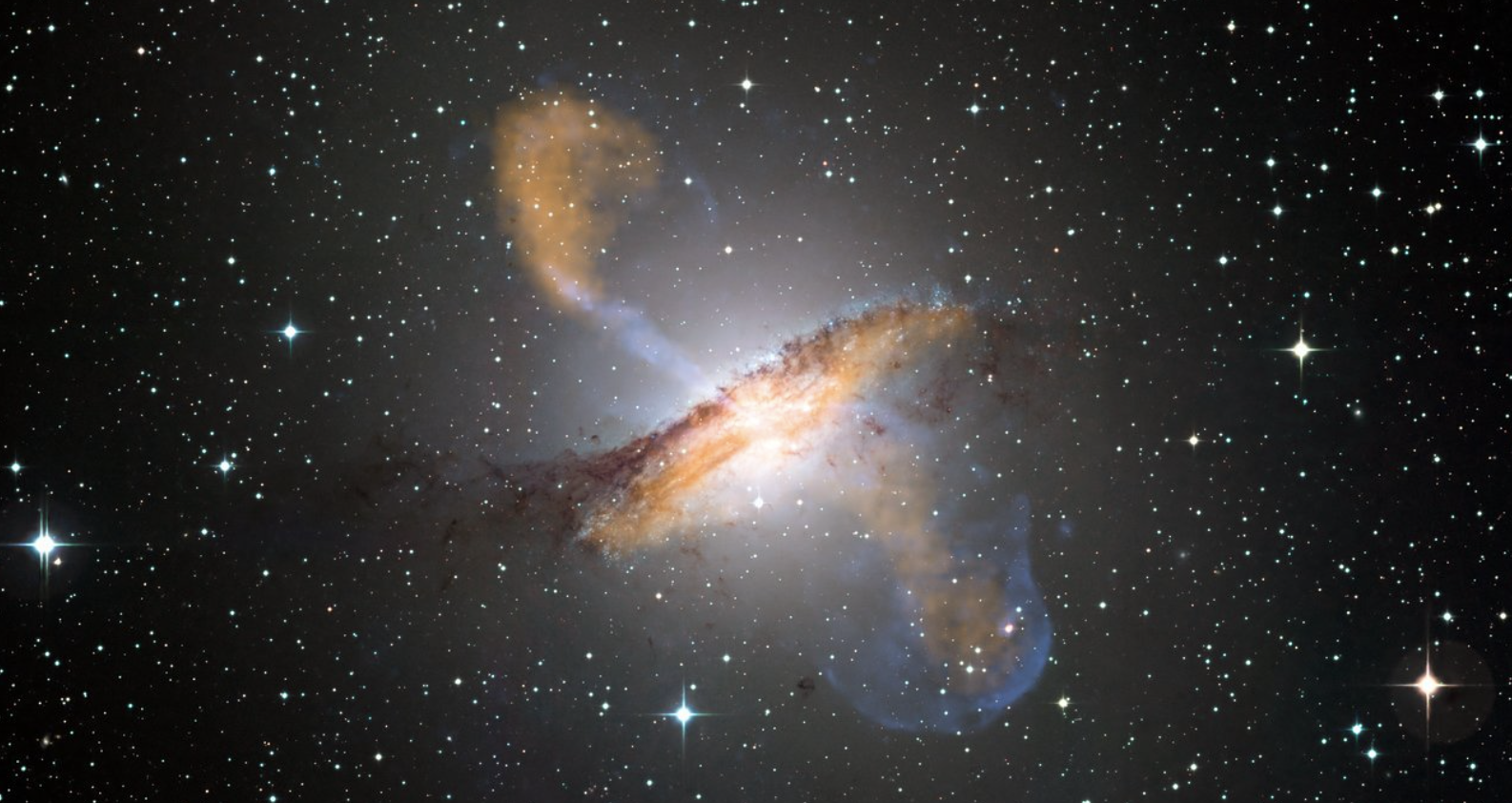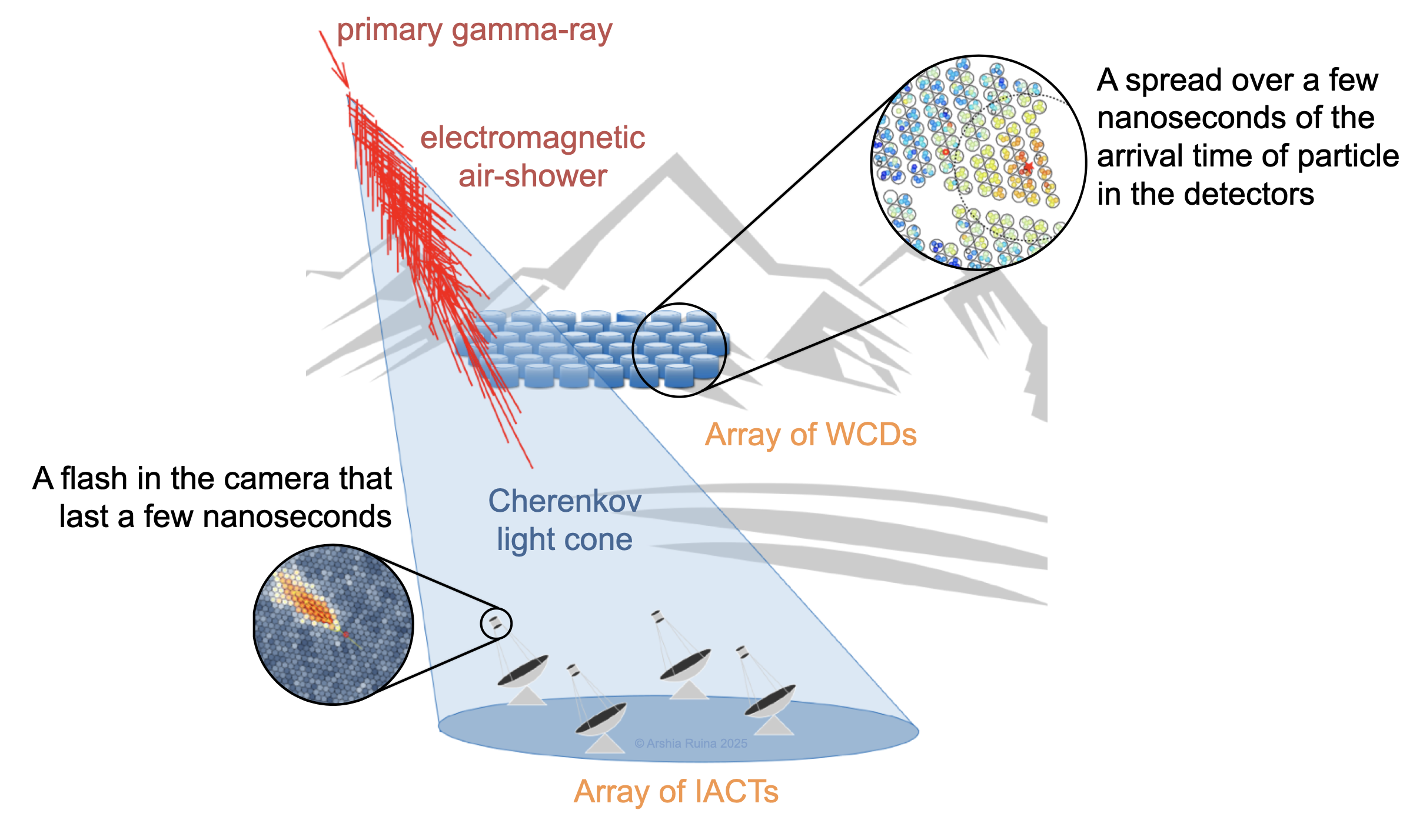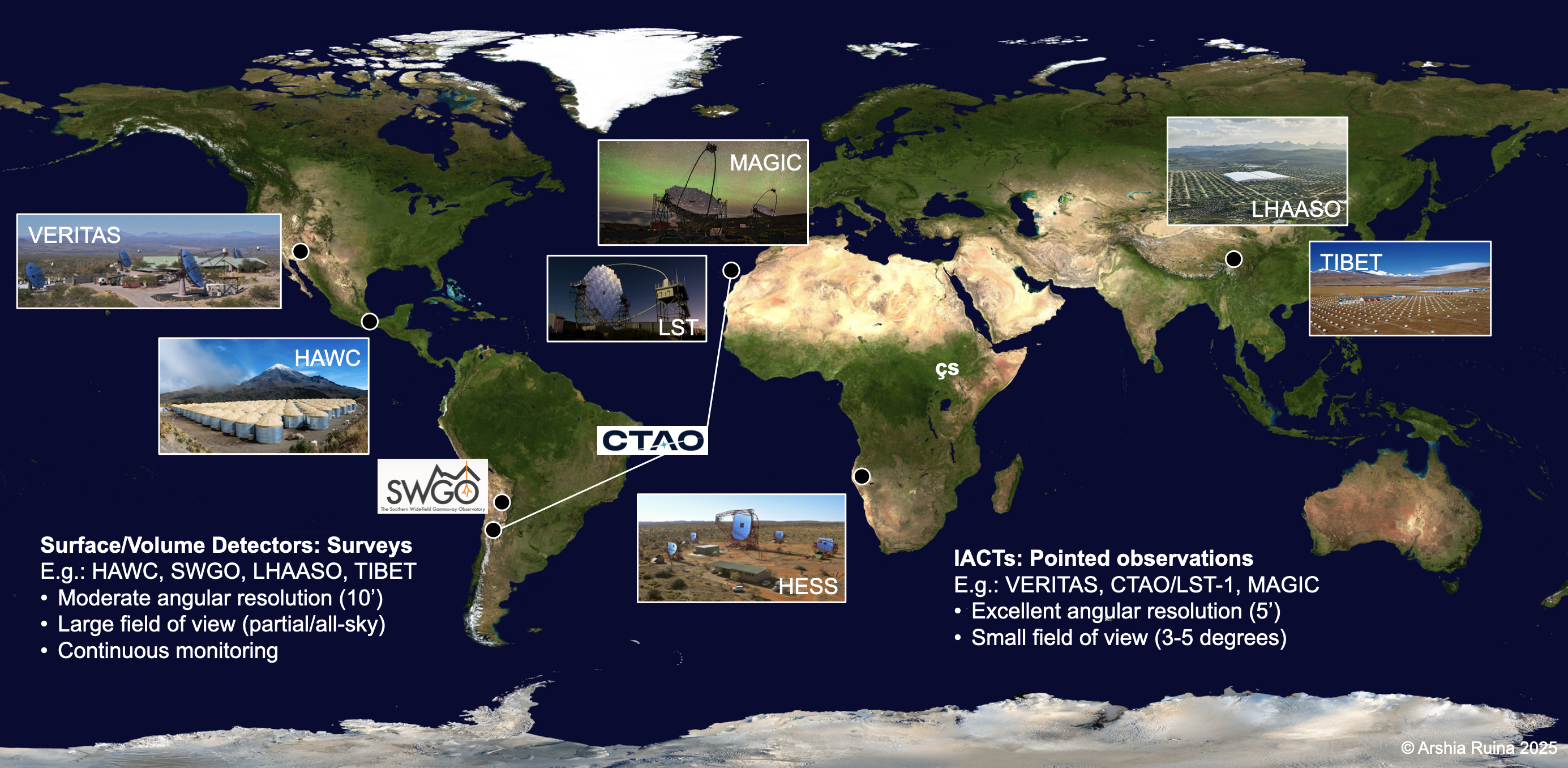Ground-Based Gamma-Ray Astrophysics

One of the many cosmic “messengers” that stream throughout the Universe and also towards the Earth is gamma radiation (the most kind on the electromagnetic spectrum). However, when gamma rays enter the Earth’s atmosphere, they don’t reach the ground directly. Instead, they interact with air molecules and generate particle cascades that emit brief flashes of blue/UV light known as Cherenkov light. This faint glow appears when particles travel faster than light in a medium (yes, light travels about 0.03% slower in air than in vacuum!).

Special telescopes called Imaging Atmospheric Cherenkov Telescopes (IACTs) are designed to catch these fleeting signals. They not only detect the light but can also reconstruct the energy and arrival direction of the original gamma-ray photon, allowing scientists to probe some of the most powerful and mysterious sources in the cosmos, including active galactic nuclei (AGNs), supernova remnants (SNRs), and gamma-ray bursts (GRBs).
While IACTs excel at detailed observations, they can only operate on clear, dark nights and view a narrow portion of the sky. That’s where Water Cherenkov Detectors (WCDs) come in. These experiments use vast arrays of water tanks that can detect the Cherenkov light emitted (in the water medium) by the air-shower particles that survive all the way to the ground. Although they have a higher energy threshold and lower angular resolution than IACTs, they offer continuous, all-sky monitoring and can detect extremely rare, ultra-high-energy gamma rays.
Together, these two techniques form a powerful, complementary approach: IACTs give us deep, high-resolution views of specific sources, while surface detectors provide the big picture, catching unexpected events whenever and wherever they happen.
My work is associated with one of each of these detector types:
- the prototype Large-Sized Telescope of the Cherenkov Telescope Array Observatory (LST-1/CTAO) located in La Palma, Spain, and
- the Southern Wide-field Gamma-ray Observatory (SWGO) that will be located in Pampa La Bola, Chile

